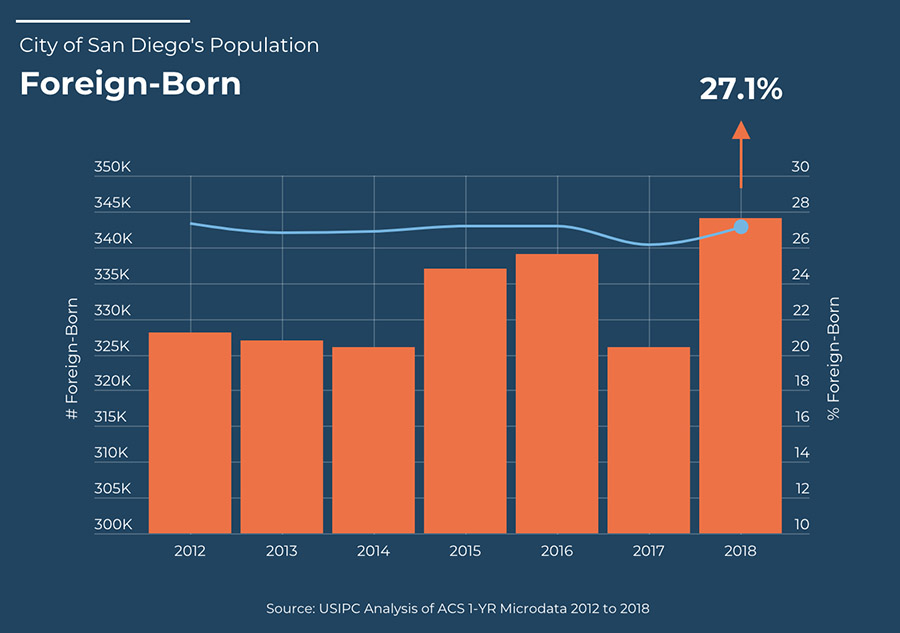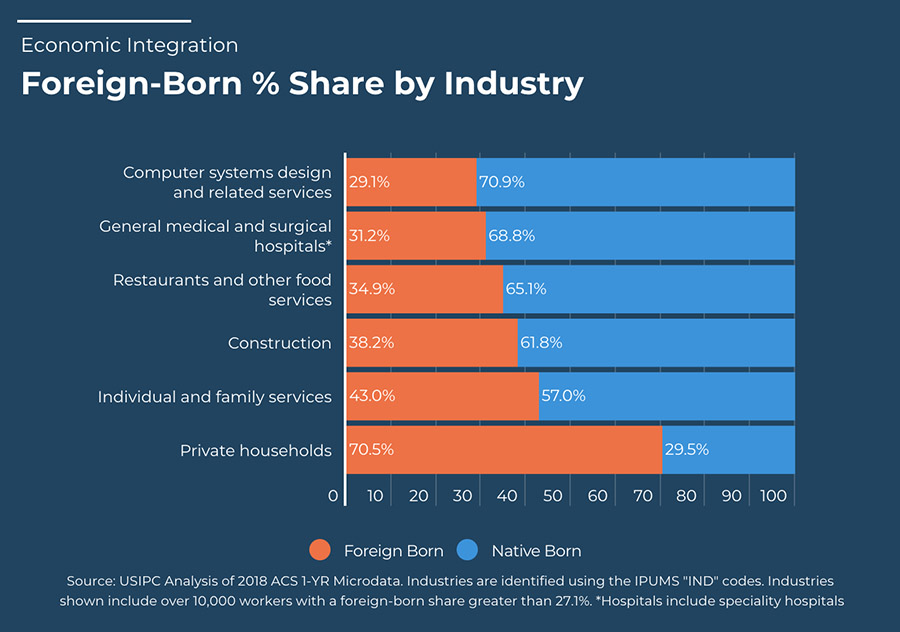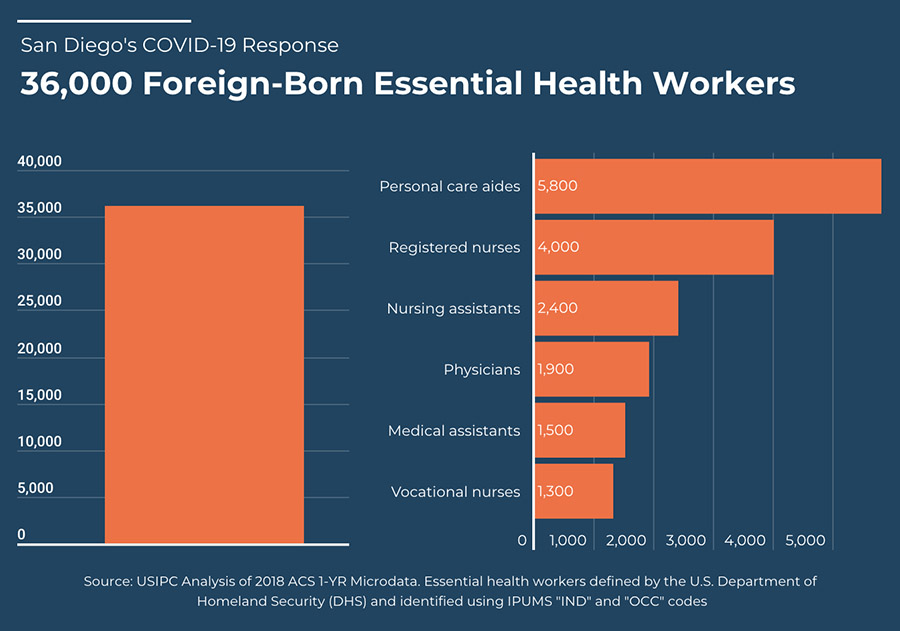Report: One-Third of San Diego’s Essential Workers Are Immigrants
Immigrant growth is highest from African, Asian and Middle Eastern nations
Published Date
By:
- Inga Kiderra
- Ashley Bailey
Share This:
Article Content

Citizenship ceremony photo by iStock_JanaShea.
A new report from the U.S. Immigration Policy Center at UC San Diego, released together with the City of San Diego and the Welcoming San Diego initiative, shows that more than one-third of San Diego’s essential workers are immigrants providing critical services to residents and businesses.
The report, Immigrant Integration in the City of San Diego, uses the most currently available microdata from the U.S. Census American Community Survey and was developed with the goal of providing insight into the city’s foreign-born populations and their contributions to the city’s workforce, economy and overall diversity.

“San Diego has immigrants from around the globe that define our city and strengthen our diverse communities,” said San Diego Mayor Kevin L. Faulconer. “This report reinforces that immigrants are essential to our workforce, our economy and our shared identity. Using this data, we can focus our efforts to improve access to opportunity and assist refugees and new citizens as they pursue the American dream right here in San Diego.”
The USIPC at UC San Diego conducts and supports social science research to advance understanding of the foundations and consequences of U.S. immigration policy. USIPC Director Tom Wong, associate professor of political science at UC San Diego, led the study into the City’s immigrant populations. Wong has served as an advisor to the White House Initiative on Asian American and Pacific Islanders under the Obama administration and currently serves on the 2020 California Census Complete Count Committee.
“These data make vivid the important role that immigrants play not only in San Diego’s present, but also in the future growth of the city. From the essential role immigrants play in the city’s workforce, which includes being on the frontlines of fighting the global pandemic, to the education and skills they bring that add to the city’s human and social capital, the data show just how much San Diego’s story is also an immigrant story,” Wong said. “With Asian immigration expected to eclipse immigration from Latin America in the coming years, and as immigration trends shift to the continent of Africa and to the Middle East, the data also show that San Diego’s immigrant story is continuing to evolve, and I’m excited to see what the next version of this report will reveal.”

Important demographic findings from the report include that approximately one in four San Diegans is an immigrant – nearly twice the national average – and the average number of years spent in the U.S. among San Diego’s foreign-born population is nearly 23 years. Of the more than 115 countries and territories making up the city’s diverse immigrant populations, the report finds that immigrants who have contributed most significantly to the recent growth in the overall foreign-born population came from outside Latin America. By 2030, immigrants from Asia, including Middle Eastern nations as defined by the United Nations, are projected to be the largest immigrant group in San Diego.

Regarding economic contributions, the report finds that immigrant workers are playing essential roles in the fight against the global pandemic. The U.S. has depended on essential employees in healthcare, agricultural, delivery, grocery, and custodial industries. In San Diego, the report estimates that more than one third of the city’s essential health, food and agricultural workers are immigrants providing critical services to residents and businesses.
Other highlights from the report include:
- Economic Contributions – Immigrants in the City of San Diego earned a combined $9.91 billion in pre-tax wages and income in 2018. This translates to an estimated $2.68 billion in federal taxes and $946.3 million in state and local taxes.
- Languages – The foreign-born populations in San Diego speak at least 70 different languages and dialects, with the most prominent languages spoken being Spanish, English, Filipino/Tagalog, Chinese and Vietnamese. About half are bilingual and speak English well; about half have limited proficiency in English.
- Education and the 21st Century Workforce – Over 30 percent of foreign-born persons who are 25 years or older have a bachelor’s degree or higher in the City of San Diego. The top five most-common degrees are engineering, business, biology and life sciences, medical and health sciences, and social sciences.
As the report notes, the latest Census microdata precede COVID-19, and subsequent surveys on employment and economic contributions will undoubtedly reflect the pandemic’s effects.
The report adds to a study conducted by the New American Economy in 2016 that analyzed immigrants throughout the entire County of San Diego.
To read the full report or for more information on UC San Diego’s U.S. Immigration Policy Center, visit usipc.ucsd.edu.
To learn more about Welcoming San Diego, a multi-sector effort to advance the civic, social and economic integration of immigrants and refugees, visit welcomingsd.org.
Share This:
Stay in the Know
Keep up with all the latest from UC San Diego. Subscribe to the newsletter today.



